
Open 24/7! Servicing all of Sydney’s Eastern Suburbs
Our Average Response time is: 1hr 53min 47sec
Ever wondered what those pipes sticking out of your roof do? They’re called plumbing vents, and while they don’t carry water, they play an important role in your plumbing. Plumbing vents regulate air pressure in the drain system, allowing wastewater to flow freely and preventing sewer gases from entering your home.
Without plumbing vents, your home’s drainage system wouldn’t work efficiently. As such, we're going to break down how plumbing vents function, why they matter, and what to do if something goes wrong.
You probably haven't given plumbing vents much of a thought and may not even know the function they serve. Well, they prevent sewer gases from creeping into your living space by safely directing them outside.
A DWV system is a network of pipes that removes wastewater (drain and waste pipes) and regulates air pressure (vent pipes), ensuring smooth drainage and directing sewer gases safely outside.
It consists of drainpipes that carry waste away that connect to the main sewer line, and vent pipes that regulate air pressure to keep everything flowing smoothly.
Without a DWV, unpleasant odours and even harmful gases like methane can enter your home, which alone makes them the unsung heroes of your home’s plumbing system. The plumbing vents of your DWV help water flow smoothly through your drains by preventing suction issues that could slow or even stop drainage. As a result, maintaining balanced air pressure in your pipes keeps everything running efficiently.
Even though plumbing vents are out of sight, just like the rest of your plumbing, they can still run into issues that affect your entire drainage system.
Leaves and debris are the biggest culprits for clogged vents, but we've even seen bird nests and possums clog vent pipes, leading to gurgling drains and slow water flow.
Poorly installed or inadequate plumbing ventilation systems can cause slow drainage, frequent clogs, or even foul odours in your home. As such, we stress the importance of engaging professional plumbers to install a properly functioning drainage system.
There are many telltale signs that you have a problem with your plumbing vents, including slow drains and drainage pipes, gurgling sounds, foul smells, bubbling toilets or a weak toilet flush.
So, what should you do if you notice any of these?
There are a few DIY plumbing steps you can take before calling in a professional.
When was the last time you cleared the leaves from your gutters? If debris can clog your gutters, imagine what it can do to your plumbing vents. As such, start by clearing your gutters and inspecting your roof vents for blockages—leaves, nests, or debris could be restricting airflow.
If you notice any sewer gas smells inside your home, or gurgling sounds when draining water, it’s time to call a professional as these could lead to larger, costly issues, and pose health risks.
Now, let's look at the different types of plumbing vents and the functions each serves for keeping your home's plumbing system running smoothly.
You may have seen big old vent stacks in your hometown's sewerage systems. Homes also have these, albeit on a much smaller scale. They are the main vertical plumbing air vents that extend through the roof, allowing sewer gases to escape and fresh air to enter the system. They connect directly to the main drainage stack.
Plumbing vent system pipes run from various drain lines to the outside, preventing pressure issues that could slow drainage or cause those gurgling noises you hear.
Air Admittance Valves (AAVs) are a modern alternative to traditional vent stacks. They’re commonly used in new renovations or where traditional venting isn’t practical.
There are specific plumbing codes to follow when installing vent pipes to ensure safety and compliance, including guidelines for vent size, placement, number of fixtures being vented and required pipe slope.
A reliable plumber should know all your local codes and ensure your roof plumbing venting system is compliant.
Besides being familiar with local building codes, a professional plumber knows that incorrect installation can lead to safety hazards and has the expert knowledge to ensure your system operates efficiently. Additionally, a licensed plumber provides a guarantee for their work, offering you priceless peace of mind, and reducing the risk of future issues.
Do you live in an older home and you're noticing some of the telltale signs we've mentioned? Just to recap, these include unpleasant odours, gurgling sounds, and water backflow. Chances are the vent is old and possibly severely damaged, causing frequent problems. This is when a replacement is often more cost-effective in the long term. While more expensive up front, replacing the vent ensures a durable, permanent solution, preventing recurring issues and maintaining your plumbing system’s efficiency. It's like a total reset on your home's DWV system.
If you suspect plumbing vent problems, the best thing you can do is have a professional inspect your system and recommend the most cost-effective solution. At Plumberoo, our experienced Sydney Eastern suburbs plumbers are ready to provide expert advice and top-notch service.
Contact us today to schedule an inspection and get your plumbing system back to optimal condition!
No, vents are essential for proper drainage, preventing sewer gases from entering your home and allowing wastewater to flow smoothly.
Signs of a clogged vent include slow draining, foul odours and unusual noises.
Without proper venting systems, you may experience drainage issues and pressure imbalances that could cause wider plumbing issues.
Air admittance valves can be a good solution in scenarios where traditional pipe venting isn't possible but they may not be suitable in all situations.
To keep your plumbing system running smoothly, regular drain cleaning is essential. Beyond the frustration of a slow-draining sink or a clogged shower, there's a risk that small blockages can quickly escalate into bigger plumbing problems. And with that, comes costly repairs.
We always stress the importance of regular plumbing maintenance because, time and time again, we see firsthand how customers who invest in it save the most money on plumbing in the long run. As such, let's explore why routine drain maintenance is the best way to keep your plumbing system in top shape.
Cleaning your drains might be one of those things you put off, ignore or perhaps not even give a second thought. Neglecting drain cleaning might not seem like a big deal but when you’re faced with a messy backup or unexpected water damage, you'll wish you hadn't.
Standing water and buildup create the perfect breeding ground for bacteria, causing foul odours and potential hygiene concerns. In the end, what could have been routine maintenance turns into costly repairs and even more stress.
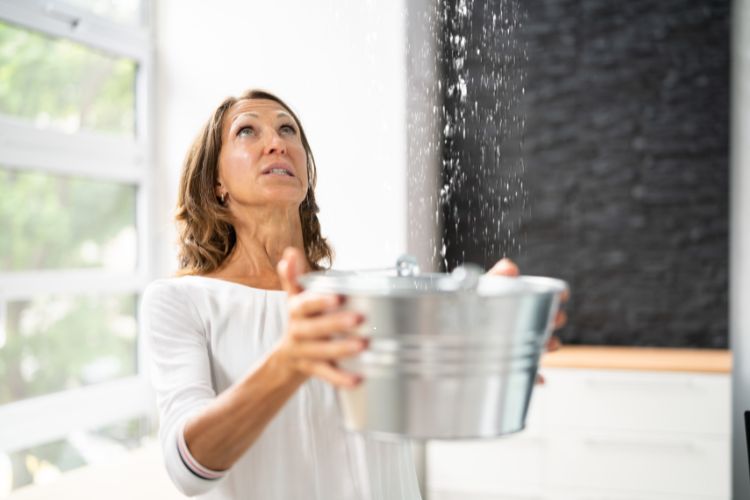
Drain cleaning is a simple fix that pays dividends. Here are some of the key reasons it's worth it.
If you want to engage in some DIY plumbing, that's totally fine. Cleaning your drains yourself can be a great first step. You can use baking soda, vinegar, or a plunger to clear minor drain clogs.
You can also use chemical drain cleaners as a DIY method, but it’s important to follow the manufacturer’s instructions carefully. Typically, you pour the cleaner into the drain, let it sit for the recommended amount of time, and then flush it with hot water to clear the blockage. Always use protective gloves.
How often you should clean your drains depends on a range of factors such as household size, plumbing condition, and usage. For DIY maintenance, a quarterly flush with hot water or baking soda and vinegar can help prevent buildup and keep your drainage flowing smoothly.
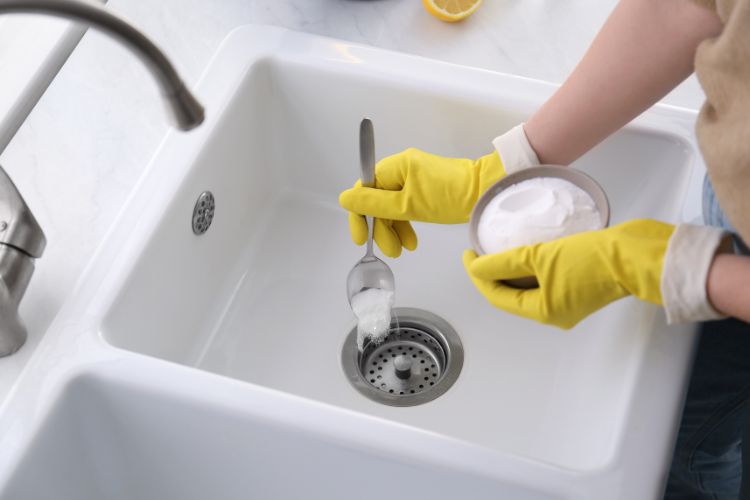
However, we highly recommend scheduling professional drain cleaning services once a year to ensure deeper blockages that DIY can't reach are cleared. If you're in a cold climate, cleaning before winter is especially important to prevent cold weather plumbing issues.
Here are some tips to keep an efficient drainage system and avoid clogged drains.
We cannot stress enough the importance of this. Grease, oils, and food particles can harden and create stubborn clogs. Dispose of them in the trash instead.
Install strainers in sinks and showers to trap hair, soap scum, and food waste before they enter your pipes.
Pouring hot water down your drains helps break down minor buildup and keep pipes clear.
Regular drain maintenance will not only prevent major blockages and avoid emergency plumbing repairs but will extend the life of your smoothly functioning plumbing system. Aim for annual routine drain cleaning.
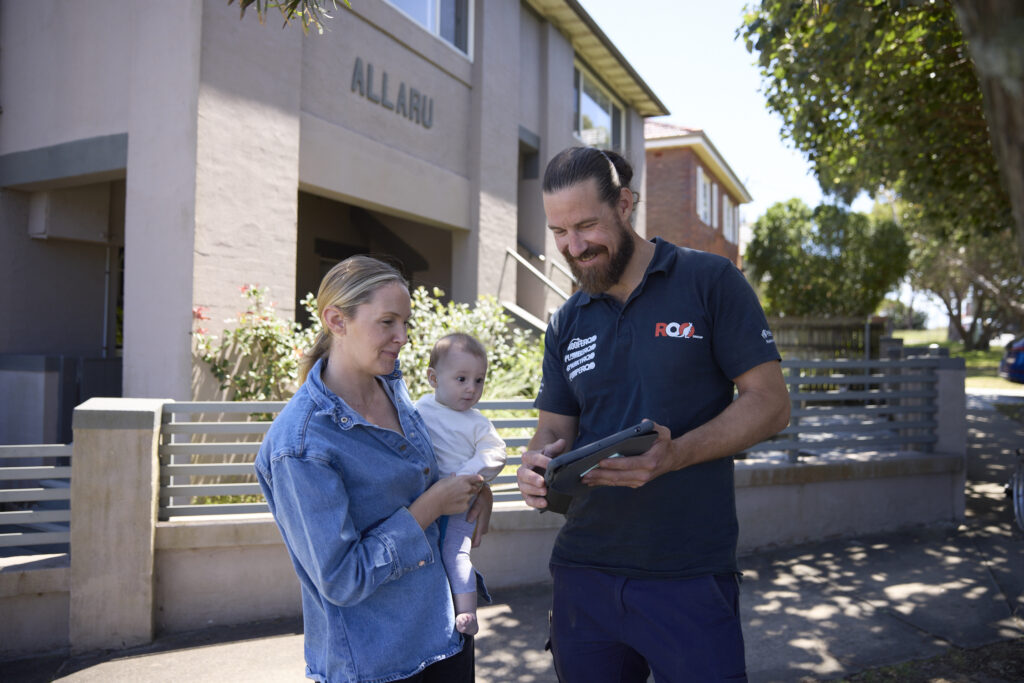
Flushable wipes could be destroying your home's plumbing. These wipes don’t break down as easily as toilet paper, which can lead to serious plumbing issues.
We hope we've demonstrated the importance of regular drain maintenance. Try to get into the habit of using the DIY baking soda, vinegar and plunger DIY method every few months.
Aim for professional drainage cleaning at least annually. If you're experiencing slow drainage or suspect a blockage, contact Plumberoo—your trusted plumber in Sydney's Eastern Suburbs. We can perform thorough drain cleaning to keep an efficient plumbing system.
Regular maintenance and drain cleaning prevent blockages, foul odours, and potential plumbing issues, ensuring efficient drainage.
Drain cleaning improves water flow, reduces the risk of a blocked drain, and helps maintain a hygienic environment.
Neglecting to clean your drains can lead to blockages, unpleasant odours, and even costly plumbing emergencies.
Household drains should be DIY cleaned 3 - 4 times a year, with professional cleaning at least once a year, or more frequently if experiencing slow drainage or frequent clogs.
No plumbing system lasts forever. Over time, leaks, rust, and blockages become inevitable. But how do you know when a simple repair will do and when it’s time to replace your pipes entirely?
Homeowners often worry about the cost and disruption of replacing pipes, but the good news is that a complete overhaul isn’t always necessary. In some cases, pipe relining—a modern, trenchless repair method—can restore your pipes without the need for excavation.
The lifespan of plumbing pipes depends on the material.
Here’s a general guide to how long different types of pipes last:
Other factors like water quality (especially hard water), proper installation, and regular maintenance also affect how long your pipes last. We are strong advocates for regular inspections to help catch early signs of wear, preventing costly damage down the line. Many of our customers who book annual inspections end up spending less on repairs over time.
Some minor plumbing issues can be fixed with repairs, or even DIY fixes, without the need for full replacement. While small leaks and drips may seem harmless, there's usually an underlying issue and tackling them early can stop them escalating into larger problems.
Low water pressure, for example, is an indication something might need repairing in your pipes as it can be caused by buildup or small leaks. Also look out for discoloured water, such as rust or brownish tint, which often means you have pipe corrosion. Depending on the extent of the pipe corrosion, you may be able to repair it with pipe relining rather than replacement.
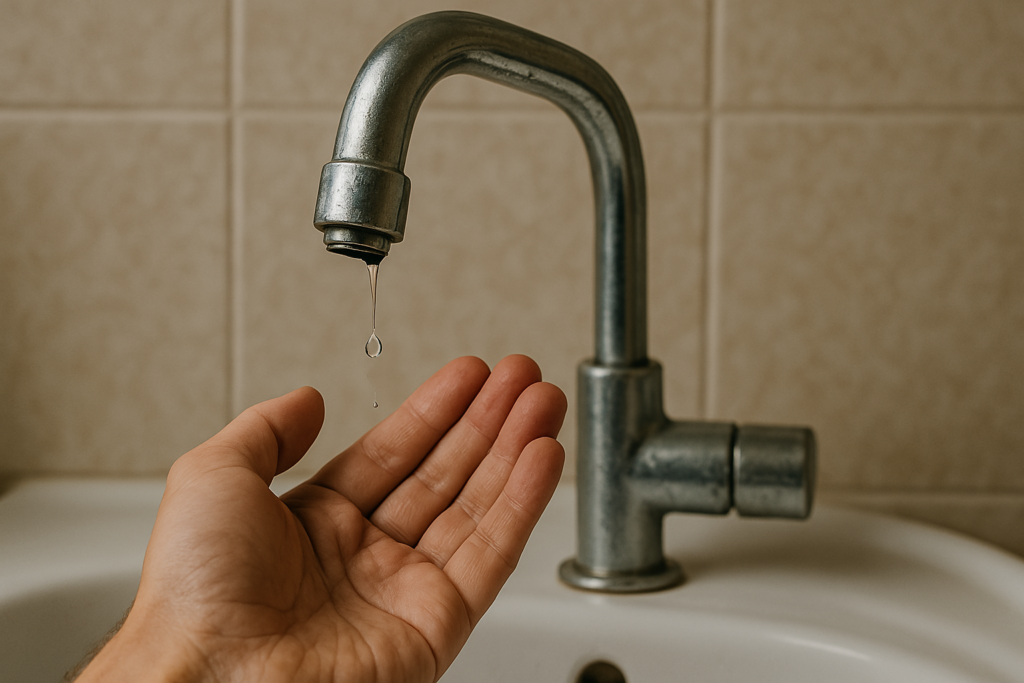
Unusual sounds from your pipes—such as banging, whistling, or gurgling—can signal air pockets or loose fittings while slow drainage may indicate blockages, often caused by tree root intrusion.
Even well-maintained pipes eventually reach a stage where simple fixes just aren't enough. Corrosion, leaks and structural damage can compound and result in the need for full replacement.
Signs to look out for include visible corrosion and rust on any exposed pipes and recurring issues such as frequent leaks or water that remains discoloured even after having a plumber flush the system.
Additionally, if you're experiencing persistent low water pressure, despite attempted repairs, it could be that your ageing pipes are nearing the end of their lifespan.
Deciding between repairing or replacement comes down to the severity of the damage, the location of the pipes and your budget. While repairs are typically cheaper upfront if your pipes are ageing or experiencing recurring problems, a full replacement can be more cost-effective over the long run. Ask yourself some questions:
Chances are, by having a brand new set of pipes, you won't experience ongoing leaks or water damage for a long time. Additionally, while DIY repairs might work for small fixes, any major plumbing work requires compliance, especially to replace sewer pipes. Trust us, the last thing you want is raw sewage escaping because you put off replacing pipes.
There is another, innovative alternative available if you're worried about the cost and disruption of having your garden, yard or driveway dug up. Ask your plumber about trenchless pipe relining as a solution. If your system is not beyond pipe repair, they can reline the inside of your existing pipes making them as good as new again.
When replacing old cast iron pipes or galvanised steel pipes, choosing the right material is essential for durability and efficiency. Modern options include:
For high-pressure systems, steel pipes are still used in some applications, but new plumbing pipes made from PEX or copper are excellent for long-term reliability.
Deciding whether to repair or replace plumbing pipes isn’t always straightforward, but a professional assessment can provide clarity. Too often we've seen risky DIY plumbing and pipe replacement leading to leaks, water damage, and compliance issues.
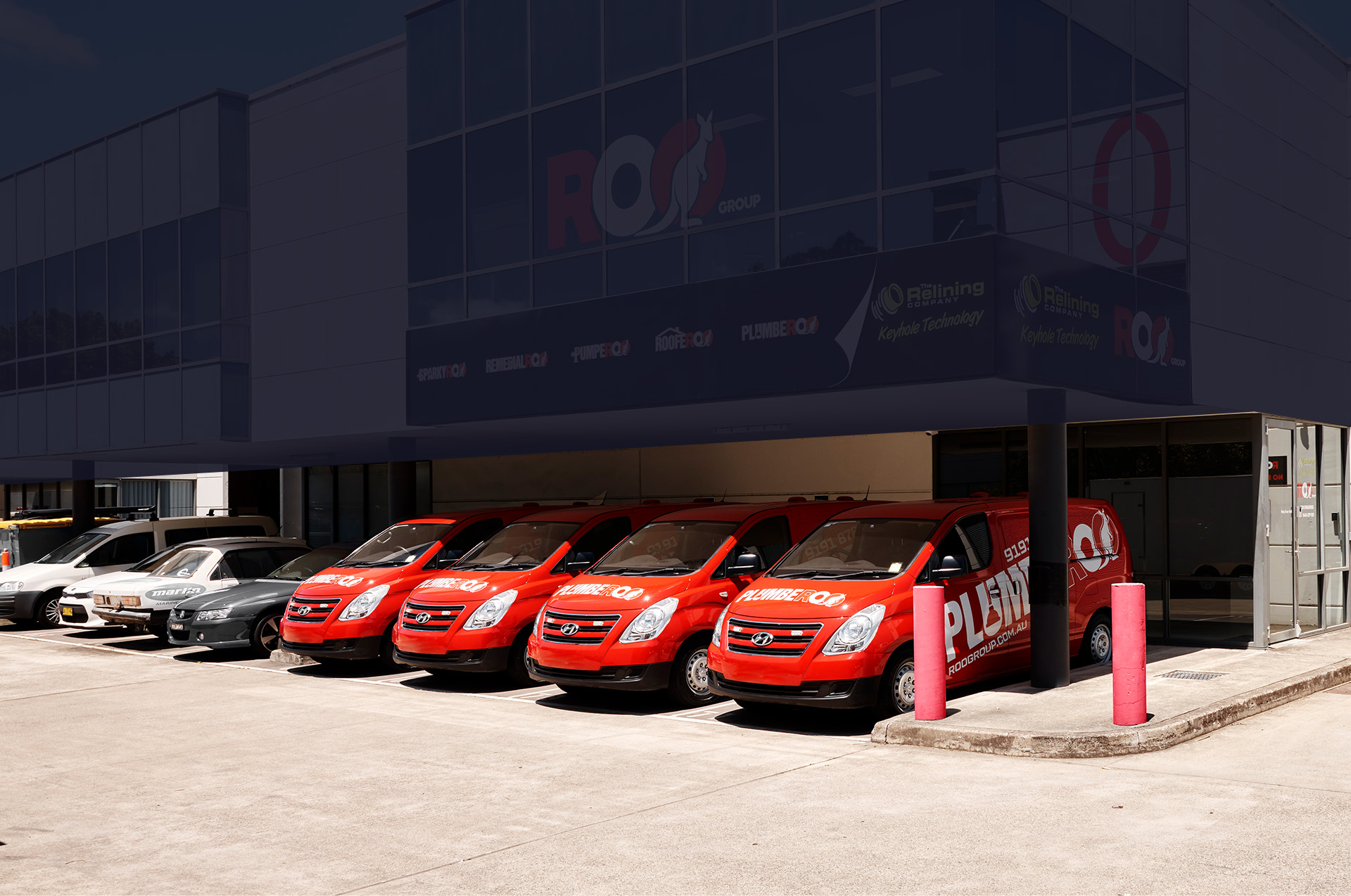
A licensed and professional plumber has the expertise to recommend the best solution. During a regular plumbing maintenance inspection, we’ll check for corrosion, leaks, and pressure issues to determine if we need to replace your pipes.
Don’t wait for a small issue to become a major headache—schedule an inspection with Plumberoo today for friendly advice and a reliable solution.
If you have frequent leaks, pipe bursts, rust-coloured water, or ageing pipes, replacement may be necessary.
If multiple pipes are failing, repairs are no longer effective, or your home has outdated materials like galvanised steel pipes, a full repipe is the best solution.
Minor corrosion can sometimes be patched, but if rust and deterioration are widespread, replacing the pipe is the safer and more cost-effective option.
Slow-draining showers, leaking taps or suspicious noises coming from your pipes offer visible clues it's time to call in a professional plumber.
The problem comes when hidden leaks that you can't spot arise. Hidden plumbing leaks that go unnoticed can cause mould growth, structural damage, and skyrocketing water bills. Make no mistake, a small drip behind a wall or under the floor might not seem important—until it leads to costly repairs.
Some of the most expensive callouts we receive are a result of hidden leaks.
The good news? There are warning signs you can watch for, and in this guide, we’ll walk you through the telltale signs of hidden leaks and what to do if you suspect you have one in your home.
Hidden leaks are, by nature, out of sight and, over time, can cause serious damage. At the lower end of the damage scale is mould growth, but even this can be harmful, especially toxic black mould, that affects indoor air quality. It can also be especially harmful to people with respiratory issues, weakened immune systems, and other health problems such as asthma.
There's also the financial toll of hidden water leaks. Over time, these leaking pipes add up, and we're not just talking about wasting our most precious resource of water, but your utility bills, too.
It's the excess water leaking over time that leads us to the top end of the damage scale—water damage in your home. Besides issues like mould growth, water damage can result in structural weakening, and ruined flooring or walls. These are costly repairs and the longer a leak persists, the worse the damage becomes, which means that early detection is of the utmost importance for protecting your home and finances.
Here's what to watch out for to catch those sneaky hidden leaks.
Track your water bills. It's useful to know your average cost so that when you suspect one has increased without a valid reason, you can compare it against previous bills. Additionally, check your water meter—if it’s still moving when no water is running, you’ve likely got a leak somewhere.

At some stage in your rental or home-owning life, you've probably noticed yellow or brown stains on ceilings, walls, or baseboards. Besides being unsightly, they’re often a sign of a slow leak behind the surface. It's worth nipping in the bud before becoming a bigger, more serious issue.
One step up from the discolouration on surfaces is seeing mould patches, especially in bathrooms or near pipes. It likely means hidden moisture issues. You may also notice a musty smell from drains, which means long-term exposure could also lead to health problems. You will want to address this one promptly.
When you see your paint or wallpaper bubbling or peeling, it's not always just a case of a new paint job required. It could also be a sign of excess moisture behind the wall which has slowly soaked through from a leaky pipe somewhere above. Over time, this can cause serious water damage, weakening the drywall and leading to costly repairs.
Have you ever heard water running when no taps are in use? It could mean water is escaping somewhere in your walls or under the floor. Don’t panic, but don't ignore it either—it could be causing damage where you can’t see it.
There are a few DIY plumbing steps you can take to detect hidden leaks before emergency plumbing is required.
Try these simple tests to catch a hidden leak before it becomes a major problem:
Check Your Garden’s Irrigation Systems – Look for soggy patches and unusually high water usage.
The advantage of calling in a professional Sydney Eastern suburbs plumber is that they use advanced tools like infrared cameras, pressure tests, and acoustic sensors to track down and fix leaks without tearing into your walls. Plus, they will find every leak and have it fixed promptly, including tap repairs.
Moreover, professional leak detection can save you time, money, and unnecessary damage.
We always advise that prevention is the best measure, and there are also steps you can take to keep your plumbing in check:

Tackle those hidden plumbing leaks before they lead to serious damage and higher water bills. Look for the early warning signs—water stains, musty smells, or unexplained water usage. While regular maintenance and leak detection tools can help, sometimes you'll require a professional look.
Don’t wait until a small leak becomes a big problem. Stay proactive and protect your home. Contact Plumberoo today for a professional inspection, friendly service and expert plumbing solutions
A water leak can go undetected for weeks or even months, depending on its location and drip flow rate.
Yes, a leak under the house can cause significant water damage, including, foundation damage, mould growth, and structural issues.
Plumbers use infrared cameras, pressure tests, and acoustic sensors to detect hidden leaks.
Even a small leak can lead to water damage, mould growth, and increased water bills.
Have you ever stopped to think about what’s really flowing through your taps? Water can reverse direction in your plumbing, potentially bringing contaminants into your drinking supply. This is known as backflow, and it's more common than you might think. It also poses a serious health risk to your household.
The good news is that there are solutions to stop this from happening. And that's what we’ll cover in this article—what causes backflow, how prevention works, and when to call a plumber to keep your water supply clean and safe.
Backflow occurs during sudden pressure changes in your plumbing. For example, a burst main or a sudden surge in demand can create pressure fluctuations, leading to backflow. This pressure causes backflow (flow going in the wrong direction). As a result, dirty water from irrigation systems, pools, or even household drains can mix with your drinking water.
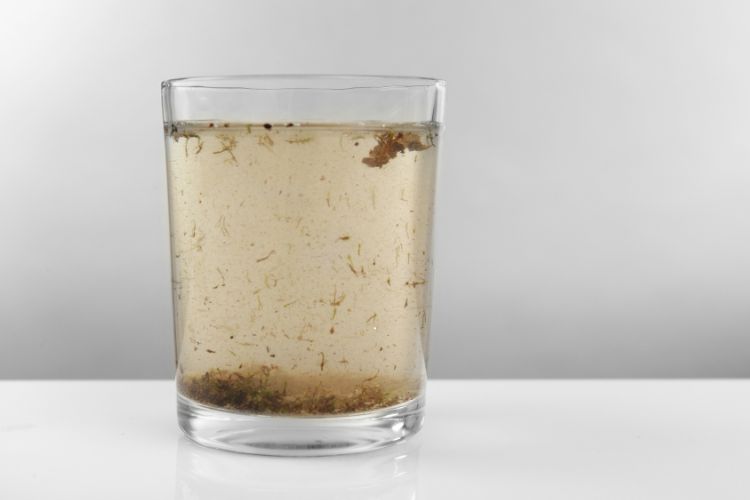
As you can imagine, having dirty water contaminate your drinking water puts you at risk of exposure to bacteria, chemicals, and other pollutants. Contaminated water doesn't just taste off—it can cause serious health issues, such as gastrointestinal illnesses. Even if you have a quality water filter, backflow should be addressed immediately.
What causes sudden pressure changes in your plumbing? Identifying the root causes is the first step to finding solutions and backflow prevention measures. Here are five common culprits that can put your water supply at risk:
Here are some backflow prevention tips to help safeguard your water supply.
The most common and effective method is to install backflow prevention devices. As the name suggests, the device protects your water supply by preventing contaminated water from flowing back into your pipes.
There are different types of backflow prevention devices:
Each backflow prevention system offers different levels of protection depending on the system's needs.

An experienced plumber can advise which backflow device best suits your circumstance and get your backflow prevention device installed.
Routine plumbing maintenance, including annual backflow testing, can prevent costly repairs down the line. Our customers with the least plumbing issues are the ones who book regular inspections (roughly once per year) which allow us to catch potential issues early. Maintenance ensures your plumbing system operates efficiently and safely. By scheduling an annual backflow test, as well as testing backflow prevention devices, you can avoid serious problems that could damage your water supply and property.
While DIY plumbing may solve some minor issues, it's not sufficient for backflow prevention. Hiring a licensed plumber ensures proper installation, maintenance, and compliance with local regulations. Look for a qualified professional with experience in backflow prevention services. This is your drinking water supply, and you'll want to ensure it's safe for your family.
If you’ve noticed discoloured or bad-smelling water, it's time to call an accredited backflow plumber immediately. There's a good chance that contaminants are entering your water supply. Also, look out for low water pressure, as dirty water may be obstructing your pipes. Additionally, keep an eye out for notices from local water authorities, as they may alert you to backflow risks in your area. Finally, if you’ve had past plumbing issues, it might be a good idea to schedule backflow testing to ensure everything’s working properly.
In Australia, our local councils often require backflow prevention devices for certain properties prone to backflow to protect the water supply. Homeowners and landlords are both legally responsible for ensuring compliance. Of course, in our highly regulated country, failure to comply can lead to fines and potential legal issues, not to mention potential health risks from contaminated water. As such, if you suspect backflow issues, you should address them immediately.

We hope we've demonstrated how backflow prevention is essential for safeguarding your water supply from contamination. Regular testing and proper installation can save you from costly repairs and health risks. If you suspect you have backflow, don't wait—book an inspection or install a backflow prevention device today for expert service and peace of mind.
The best way to prevent backflow is by installing a backflow prevention device, such as a check valve, airgap or reduced pressure zone device.
A backflow preventer should be installed at the point where the water line enters your home, typically near the water meter or main shut-off valve.
Check your plumbing system for a backflow preventer device, often located near the water meter or entry point, or consult a plumber with backflow prevention accreditation for confirmation.
The best device for preventing backflow depends on your system; commonly used options include check valves, air gaps, vacuum breakers and reduced pressure zone devices for optimal protection.
There's little more frustrating than a shower that suddenly turns into a trickle. Or a faucet that blasts water one minute and slows to a drip the next. Fluctuating water pressure is a common issue in many homes, caused by anything from clogged pipes to municipal supply changes.
Tackling the issue promptly can help avoid larger plumbing headaches down the line and restore your shower to full power. So, what are the main causes and how can you fix them? Let's get into it.
Water pressure can change for a variety of reasons. Some of these are out of your control and may need a professional plumber, while others may require just a simple fix.
If your entire neighbourhood is experiencing low or inconsistent water pressure, the issue may be with the local supply. Seasonal demand can have an influence, such as in summer or during a drought and increased irrigation. Even increased household use can reduce pressure. Additionally, if there are council maintenance work or pipe repairs in your area, this may temporarily disrupt water flow.
Over time, sediment and mineral deposits can build up in your pipes and, as a result, restrict water flow. If you have an old home, you could have corrosion in older pipes which can also narrow passageways, leading to lower pressure. Look out for water stains and damp spots, or if you have an unexplained spike in your water bill, a leak could be the culprit—this is when it’s best to call a plumber before the problem worsens.
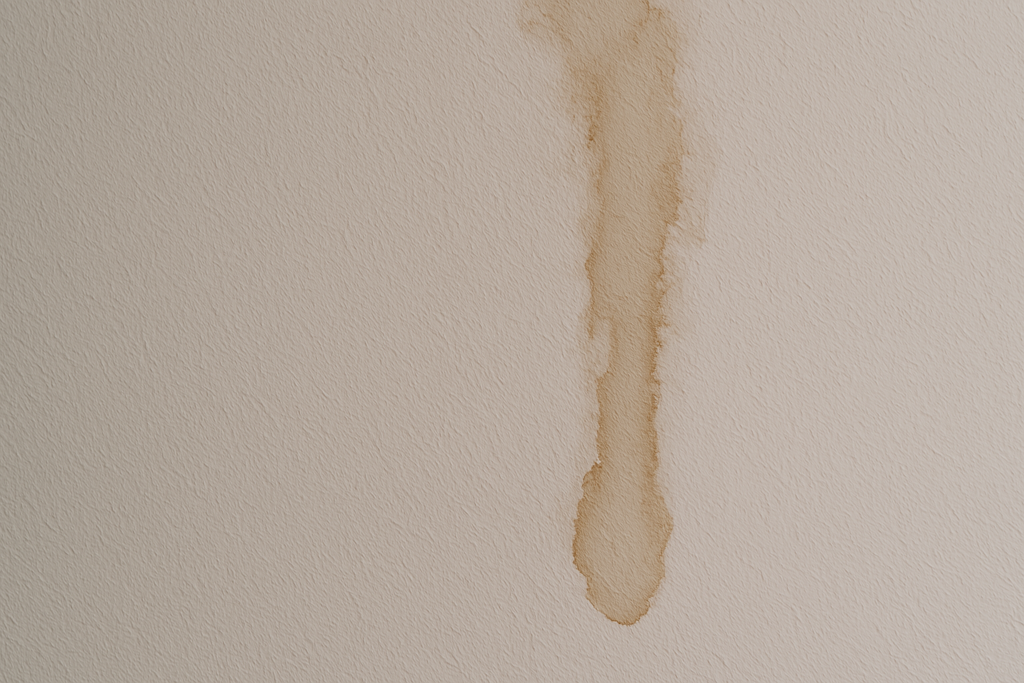
Your pressure regulator helps maintain consistent water pressure in your home. When it fails, you might experience sudden fluctuation. If all your taps are affected, check your pressure regulator and if the water pressure changes happen frequently, a malfunctioning regulator could be to blame.
Whether you're using multiple water-using appliances at once—such as a dishwasher, washing machine, and shower—or having guests staying over, a high demand on your home's system can influence water pressure. If your plumbing system isn’t designed to handle high simultaneous demand, you may want to consider upgrading your hot water system or installing a pressure-boosting feature.
There are several ways to troubleshoot water pressure issues and fix the issue, some with DIY plumbing.
To check for hidden leaks, turn off all water-using appliances. Then, monitor your water meter—if it’s still ticking, that's a giveaway you may have a leak. Now, depending on the type of leak determine whether you can fix it yourself or require a plumber. Visibly corroded or rusted old pipes will need replacing, especially in older homes where buildup restricts flow. If you suspect major pipe issues, it's best to call a professional plumber.
Mineral deposits and debris can clog your faucet aerators and showerheads, which restricts water flow.
Here's a handy DIY plumbing trick to clean them:
These simple steps can restore strong, steady water pressure. If this does not solve the issue, call in a professional.
A faulty pressure regulator can cause water pressure fluctuations and, as we've suggested, you can check the issue yourself. To check if it’s the issue:
If your home has older, narrow or corroded pipes, it could be time to upgrade to larger-diameter pipes or even replace your hot water system or entire plumbing system. For newer homes with ongoing low pressure, a water pressure booster may be a worthwhile investment. These systems are especially helpful in multi-story homes to help maintain steady pressure.

Sometimes, DIY fixes just aren’t enough to resolve plumbing issues. If you’re facing recurring water pressure issues, it’s time to call in a professional plumber. Addressing issues early can save you money in the long run and prevent further damage. Contact Plumberoo, your trusted and reliable Eastern Suburbs plumbers today for an inspection.
Low hot water pressure can be caused by clogged pipes, a faulty pressure regulator, or issues with the municipal water supply.
You can address low water pressure by cleaning faucet aerators, checking for leaks, or contacting a plumber to inspect the pipes and pressure regulator.
Sediment buildup in a water heater can restrict flow, leading to reduced water pressure.
If basic fixes don’t resolve the problem or if you notice significant pressure drops, it’s best to call a plumber to assess the situation.
Tree roots are always searching for moisture making underground pipes an ideal target for them. That's why one of the most common issues we get called out for is tree root intrusion in homeowners' piping systems.
This intrusion causes blockages, leaks and, in worst-case scenarios, even major structural damage. So, if left unchecked, it can lead to costly repairs and frustrating plumbing issues. The trick is to tackle the intrusion before it can start to grow inside your piping.
Even the smallest crack or loose joint in a pipe can release vapour or water. This is like a callout to nearby roots and once they find an opening, they grow inside your pipes. Over time, the roots expand and before long you have a blocked pipe that can slow drainage or even cause pipe bursts.
If you live in an old home with pipes made from clay or concrete then they are especially vulnerable, but even modern PVC pipes aren’t immune to tree root intrusion, especially if they have weak connections.
So, how do you know if tree roots are causing trouble in your plumbing? There are a few key warning signs to watch for:
Tree root intrusion will only get worse if ignored. Trees love to grow, and the longer you let this occur inside your pipes, the more serious plumbing issues you will have over time. As the roots grow, they widen cracks and create major blockages, eventually causing pipes to completely burst.
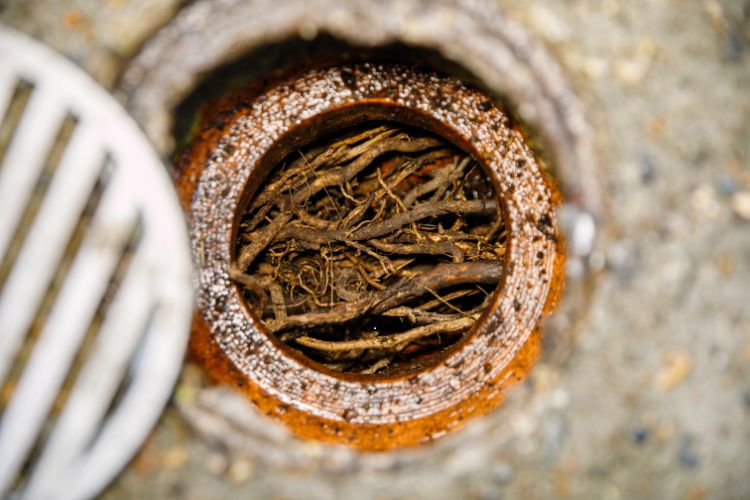
If left unchecked, tree root intrusion can result in sewer backups, leading to foul odours from drains and potential health risks. Here's another incentive not to ignore it—the longer the problem goes unresolved, the more expensive the repairs become because what could have been a simple fix might turn into a full pipe replacement.
If you suspect tree roots in your pipes, there are a few ways to tackle the problems—some with DIY plumbing, while others require a professional.
Rock salt works by dehydrating tree roots when flushed down a toilet or drain in large amounts. As the salt absorbs moisture, it slowly shrinks and kills the roots without harming the tree. However, this method requires lots of rock salt repeated treatments and may take weeks to be effective.
Another DIY method is hydrojetting which uses high-pressure water to blast away blockages, although you have to access your pipes which you may require a plumber for.
If you don't mind getting your hands dirty, you can try using mechanical augers to cut through roots. However, it will be tough work and may only provide a temporary fix.
It's often easier and safer to get a pro in and have the job done properly and efficiently. A qualified plumber can carry out a video pipe inspection by inserting a miniature CCTV camera inside your pipe to pinpoint the extent of the damage. By doing so, they can then advise on the best and most cost-effective step forward.
Chances are they can fix the problem with trenchless pipe relining which repairs pipes without digging up your whole yard. However, full pipe replacement may be necessary for severe cases. Either way, if roots keep coming back, it’s time to call a plumber.
The best thing you can do is not to plant trees near sewer or water lines. If you’re landscaping, choose trees with non-invasive root systems that are less likely to seek out moisture in your pipes. A good landscape gardener or horticulturalist could advise on this. For already established trees, installing root barriers can help by directing roots away from underground plumbing. Most quality plumbers can do this for you.
We always stress that regular plumbing maintenance is the best prevention for any issues. Consider getting your trusted local plumber in to carry out video inspections to catch early signs of intrusion before they cause major damage. Lastly, if you’re replacing old pipes, opt for PVC or copper—not clay or concrete—they’re more resistant to root penetration. Consider pipe relining, which can provide a non-invasive solution to line the inside of your pipe to prevent further root intrusion and repair damage.
When planting near plumbing, you'll want trees with shallow and non-invasive roots to prevent damage to pipes. Again, ask your landscaper or horticulturist from your local nursery about this. Some of the best options include Japanese maple, dogwood, magnolia, redbud and birch.
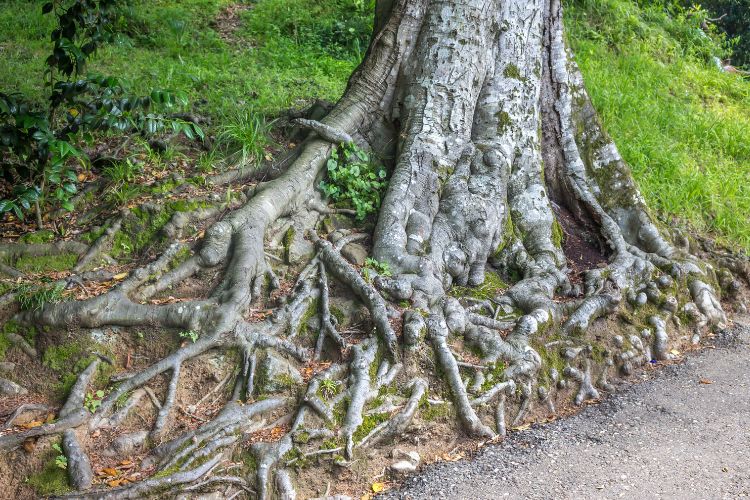
Just remember, avoid planting too close to sewer lines and space out the plants wide enough so they're not competing to find water sources. And while you're at it, bury some root barriers.
In some situations, DIY solutions just won’t cut it. If you're dealing with complex plumbing issues like tree root invasions, it's time to call a professional plumber. Don’t wait until it’s too late—Contact Plumberoo today to address any concerns and protect your pipes.
Install root barriers and consider proper tree spacing for when tree roots grow. Regularly inspecting your plumbing offers the best protection.
Tree species with aggressive root systems, such as willows, gums, and oaks, can cause significant tree root obstruction and pipe damage to your plumbing system, including sewer pipes
A professional plumber can use a mini CCTV camera to inspect your pipes and a high-pressure water jet or a mechanical auger to remove tree roots obstructing drainpipes.
A plumber may use specialised equipment like a drain snake or hydrojetting to clear tree roots blocking your toilet.
You may have heard the term greywater before, but do you know exactly what it means? It's essentially wastewater from showers, sinks, and washing machines. But what if this water could be reused instead of wasted?
Installing a greywater system does just that. It not only makes your plumbing more sustainable but also reduces strain on local water supplies and lowers your water bills. Join us as we explore how greywater systems work and the key benefits they offer for your home and the environment.
A greywater recycling system captures this water before it goes to waste, filters it, and redirects it for reuse, reducing both water consumption and strain on local supplies.
It's important to note that not all wastewater is the same. For example, the water flushed down your toilet (blackwater) cannot be recycled for obvious reasons. However, the water from your shower can be recycled for flushing toilets. The same goes for used water from your sinks, bathtubs, and washing machines.
Greywater and blackwater serve very different functions in a household’s wastewater system. Blackwater, which comes from toilets, contains sewage and must be processed through a septic system or wastewater treatment facility. In contrast, instead of letting appropriately treated greywater go to waste it can be safely reused for non-drinking purposes like garden irrigation and toilet flushing.
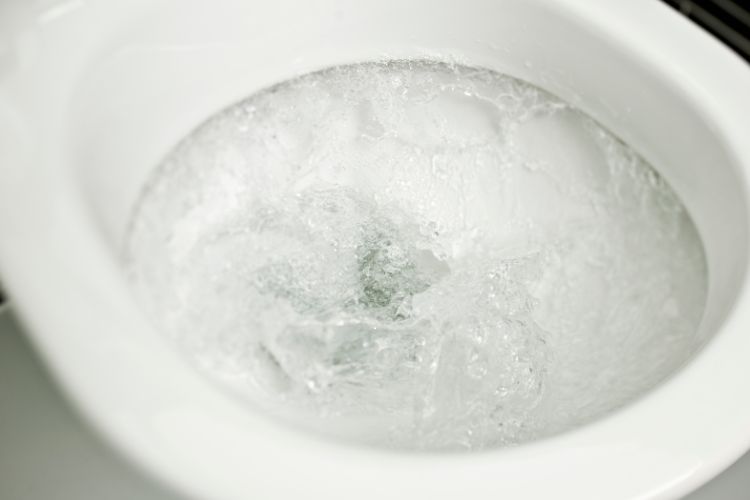
Choosing the right greywater system depends on your needs and budget. Here are the main types:
We've already touched on a few benefits, but there are even more reasons to invest in a greywater system.
Freshwater is humanity's most precious resource, and a greywater system helps you use it wisely. There's no reason why we should be letting the water from showers, sinks, and laundry go to waste. By redistributing it for non-drinking purposes, you can significantly cut down on your household’s overall water consumption. This also helps ease pressure on local existing water supplies, especially during droughts, which is super relevant for Australia.
Who doesn't want to save money? Or another way to look at it—why pay for water twice? A greywater system reduces your demand for mains water. Over time, this leads to noticeable savings on your water bill. Depending on usage, some households see reductions of up to 50%—that’s money in your pocket.
More people are looking for more sustainable ways to live and investing in a greywater system is an excellent way to achieve this. A greywater system redirects it to your garden, reducing wastewater and your home’s overall environmental footprint. It’s an eco-friendly plumbing solution to live more sustainably by making the most of every drop.
You can even get financial support for installing a greywater system. Many Australian states offer rebates or incentives for water-saving systems. Check with your local government or water authority to see what’s available and how you can apply.
Greywater isn’t just a water-saving solution—it’s great for your garden, too. That's because it contains small amounts of nutrients that can naturally fertilise plants and improve soil moisture. Your lawn and garden will thank you.

By reusing greywater, you’re helping to reduce the burden on your local council water treatment facilities. This can play a role in preventing water shortages in your community, making you a team player.
Before diving into the world of greywater, there are a few important factors to consider.
Living in Australia means strict regulations to ensure health and safety. Each state has different rules about system installation, water treatment, and where greywater can be used (e.g., gardens vs. toilets). As such, be sure to check with your local council or water authority to ensure compliance. Alternatively, a quality Eastern Suburbs plumber will be able to advise you on local codes.
If you're sitting on the fence due to the upfront cost of a greywater system, it's important to consider the long-term cost savings. Installation cost varies depending on complexity. Simple diverters can be affordable, while advanced filtration systems require a bigger investment. Also factor in potential rebates.
We are a big believer in plumbing maintenance to ensure a smooth-running household and prevent costly repairs. Greywater systems are no different. Regular upkeep and monitoring of a new or existing system will help keep it running efficiently.
Choosing the right greywater system depends on your household size, water usage, and budget. Simple diverter systems work well for smaller homes, while larger households may benefit from advanced filtration setups. It’s also worth researching popular greywater system brands in Australia to find a reliable option.
If you’re still unsure and considering one for your home, contact Plumberoo for expert advice or explore government rebates to make your investment even more cost-effective.
Greywater treatment systems help conserve water, lower utility bills, and support sustainable living by reusing household wastewater for irrigation.
Yes, recycling greywater reduces water costs, benefits the environment, and can qualify for government rebates, making it a smart long-term investment.
Greywater systems require regular maintenance and must comply with regulations to ensure safe and efficient operation. They are not suitable for washing clothes in all cases and should never be used as a drinking water source.
If you reuse wastewater, you reduce wastewater discharge, as well as conserve freshwater resources. Recycled water in subsurface irrigation systems and drip irrigation hoses also provide nutrient-rich water for plants, promoting eco-friendly water use.
We've all heard it at some point—loud bangs, rattles, or hissing coming from your pipes. It
really is your pipe calling out for help, because noisy pipes are a not-so-subtle telltale sign of
common plumbing issues. These can range from mildly annoying that can be solved with DIY
plumbing to a sign of a bigger problem, which you'll require a pro. But knowing which is the
trick.
Let's explore why pipes make noises, what the different sounds mean, and how you can fix
them—whether with a quick DIY solution or by calling in a professional plumber.
Figuring out why a pipe is making certain sounds can feel like trying to work out what a baby's
different sounds and cries mean. Luckily, we've been in the business long enough to decipher
the pipe sounds that signal different plumbing issues.
Here’s what might be going on.
If you hear a loud bang when turning off the tap, you’re likely dealing with water hammer. This
happens when free-flowing water suddenly stops or changes direction, causing a shockwave in
your pipes. It’s especially common in homes with old plumbing systems and/or high water
pressure.
On water pressure, if you're hearing a constant hissing sound, it could mean your water
pressure is too high. High water pressure puts stress on your pipes. However, if the hissing
comes from one specific spot, it might indicate a hidden leak. You may also detect this if your
water bill has suddenly spiked.
If your pipes shake and rattle when you turn on the faucets, it means they might not be secured
properly. The rattling is the sound of loose pipes vibrating against walls or other surfaces. If left
unaddressed, it leads to wear and tear over time.
Gurgling noises are a telltale sign of a drainage issue. If it happens when you flush the toilet or
use the sink, you might have a partial blockage in your plumbing system or air is trapped in your
pipes.
Are you hearing a soft ticking noise when running hot water? That’s just your pipes expanding
and contracting as they heat up and cool down. It’s usually harmless, but if the noises become
louder, it could be a problem with the pipe's installation.
Now that you know what’s causing those strange pipe noises, let’s talk about how to fix them.
As mentioned, some solutions are simple DIY fixes, while others might require a professional
plumber.
As we observed, too much water pressure stresses your pipes, causing that hissing noise. A rule
of thumb for safe pressure level is typically between 40-60 psi. You can solve this yourself by
checking the water pressure gauge. If it’s too high, installing a pressure-reducing valve, a water
pressure regulator, or a pressure reducer can help regulate the flow, as well as protect your
plumbing.
If you’re getting loud banging sounds when turning off taps, you can add insulation around
pipes to cushion the impact. Alternatively, you can have a plumber install a water hammer
arrestor which absorbs the shockwaves and prevents sudden pressure surges.
Air chamber can help prevent water hammer by absorbing the sudden pressure changes that
cause banging noises in your pipes. If you're unsure which solution best fits your circumstance,
it might be wise to call a professional.
Rattling pipes can usually be fixed by tightening loose fittings or adding pipe clamps and
brackets to keep them in place. Depending on how handy you are, you may be able to do this
yourself. On most occasions, however, you may need a plumber to access and secure them
properly. They can also install worn-out washers while they're at it.
If you're hearing gurgling or bubbling, you may have air in your pipes. This is an issue that can
be solved with DIY plumbing. To flush out the trapped air in pipes, turn off the water supply and
open all the taps in your home, starting from the highest point and working down to the lowest
to drainpipes. Once the water runs smoothly without sputtering, turn the supply back on.
The best way to avoid noisy pipes and plumbing issues is through regular maintenance. Our
customers who spend the least on plumbing are the ones who invest in regular (roughly annual)
plumbing maintenance checks. But you can also check for leaks, rust, or loose fittings every few
months to catch small issues before they turn into costly repairs.
If you're hearing strange noises, it's time to carry out an inspection. Additionally, investing in
quality plumbing materials, like durable pipes and proper insulation, can also prevent long-term
issues.
If you're experiencing persistent issues despite your quick DIY fixes, it could mean serious
plumbing problems leading to emergency plumbing. This is when you need to get in a local
plumber. One of our most popular services now is pipe relining, whereby we can make
damaged pipes as good as new, without replacing the entire pipe, saving our customers time
and money.
If you want to have strange noises coming from your pipes investigated or require maintenance
contact Plumberoo for friendly and professional eco-friendly plumbing services.
To fix noisy pipes, first, you need to diagnose the type of sound as different noises mean
different plumbing issues, which require different solutions. Such fixes range from adjusting
water pressure, securing loose pipes, or flushing air from the system. If the noise persists,
however, installing water hammer arrestors or calling a plumber may be necessary.
Yes, to fix water hammer yourself you can try reducing water pressure, installing water hammer
arrestors or adding cushioning to pipes. However, we find most customers get professionals to
solve it properly and efficiently.
You can fix a water hammer by installing water hammer arrestors, adjusting water pressure, or
securing loose pipes. If the issue persists, it's time to call in a licensed plumber for effective and
long-term solutions.
As the name suggests, plumbing emergencies happen when you least expect them. Minor plumbing issues can sometimes be resolved with a DIY fix, while more severe scenarios may require expert professional assistance. In both cases, acting quickly is key and being well prepared for any eventuality is crucial for minimising long-term damage or costly repairs.
The solution? Having an emergency plumbing kit ready and raring to go when you need it can make all the difference.
Plumbing emergencies come in all shapes and sizes from burst pipes to unexpected leaks and sewage backup or mould growth to the dreaded 'no hot water' supply. If not handled promptly and efficiently, these types of emergencies can result in significant damage to your property and even pose health risks to those on the property.
Some emergencies can be prevented with regular maintenance and professional inspections of your plumbing systems, but even the best-kept properties can face these issues from time to time.
Each scenario will require a different fix, but some tools and tricks can help in most situations, and we recommend that every home or business invests in a well-stocked plumbing emergency kit.
Here's your comprehensive guide on exactly what you should include in your kit to help prevent further damage. To make it even easier, all of these items can be purchased in your local hardware store.
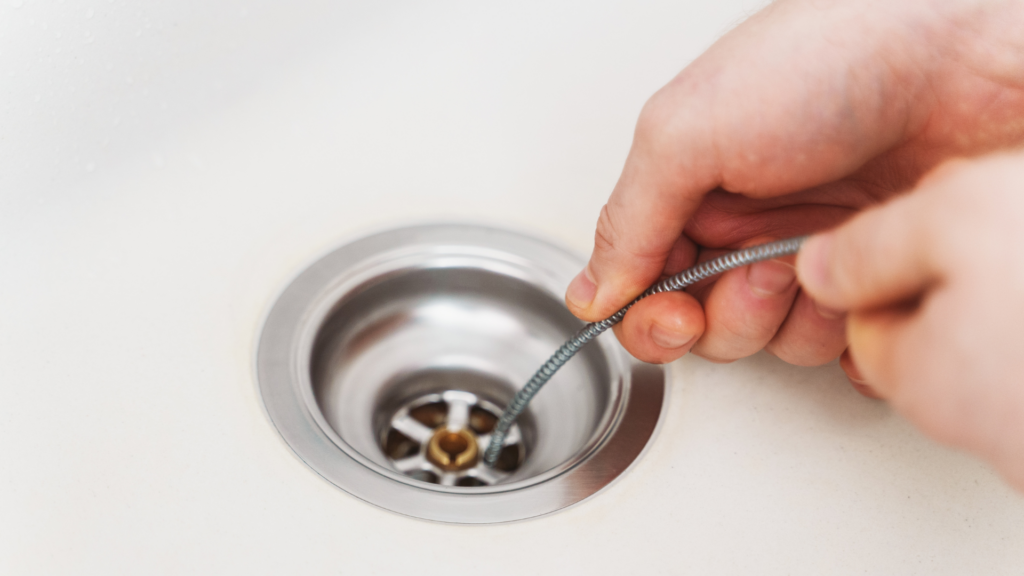
An adjustable wrench is used to tighten or loosen nuts and bolts of various sizes. Its moveable jaw gives it a secure grip making it an extremely versatile tool useful for many plumbing jobs.
Pipe wrenches are designed for gripping onto and turning round objects—making it the perfect tool for fitting or fixing pipes.
One of the must-have tools in your emergency plumbing kit, plungers are ideal for quick fixes on clogged toilets or sinks. Advanced kits may include multiple plungers for different scenarios, but this isn't absolutely necessary. For example, you may have a specific toilet plunger for hygiene purposes.
It's important to note that using too much extreme force while plunging can cause issues to your plumbing system. If the clog doesn't budge easily, call a professional for further assistance.
Duct tape can be used as a quick fix for a leaking pipe or fixture before your plumber arrives. While not a permanent solution, its strong and waterproof qualities make it a must-have item in any homeowner's emergency plumbing kit.
Plumber's putty is a soft, flexible material most commonly used to create waterproof seals around sinks and drains. It's not advised to use it on a pressurised fitting because it doesn’t have the strength to withstand water pressure and may fail over time.
You can't look past a trusty pair of rubber gloves during a plumbing emergency. They protect your hands from potential nasties in the water including chemicals, dirt or sharp objects. A good pair can also improve your grip when dealing with awkward fittings or fixtures.
A sturdy bucket is crucial to catch water during many common plumbing emergencies. It's also useful for transporting other tools and can help keep your workspace clear of obstacles.
An old towel or two in your plumbing kit will be handy for soaking up water from leaks and spills and for drying or wiping your tools and hands mid-job.
Having spare washers and O-rings on hand allows you to fix dripping taps and leaky pipes quickly. They're small but mighty and help maintain tight and leak-free seals.
Adding a torch or headlamp to your emergency kit is useful for lighting up tight spaces that are dark or not easily accessible.
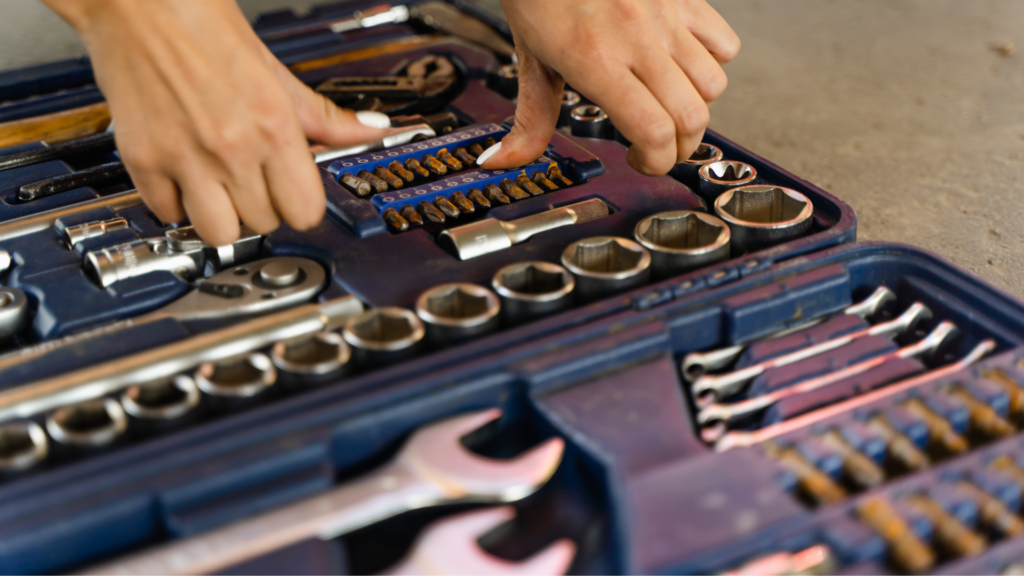
Every good emergency plumbing kit will have all of the key tools ready and prepared to tackle minor issues and plumbing emergencies. Make sure you store your kit in an accessible location so you can easily grab it should disaster hit.
Just like your plumbing systems, your emergency kit should be well-maintained to ensure all items are still usable when required. Missing or broken tools can turn a minor plumbing issue into a bigger hassle.
Most DIY plumbing solutions are temporary and meant to control the issue until a professional can assess it. Attempting advanced repairs without the right expertise can sometimes make the problem worse.
Short-term fixes, such as using pipe clamps or epoxy putty, can help stop leaks and minimise water damage. However, it’s important to know when it's time to call a plumber to prevent further complications.
All of the tools in your emergency plumbing kit can save the day in their own way. For example, a pipe wrench can tighten pipes and fittings that have come loose, and your plumber's putty can create watertight seals around sink drains or pipes. A sink plunger can help relieve a stubborn clog while duct tape can slow down small leaks until professional help arrives.
When attempting any DIY fix, safety is paramount. Wear protective gear like gloves and goggles to prevent exposure to anything harmful. Good lighting around the area is crucial for removing any potential unseen hazards and allowing you to gain a true idea of the root of the problem.
It's also advised to have a first aid kit on hand should any medical accident occur during the plumbing emergency.
We can't emphasise enough the importance of regular maintenance and professional inspections to prevent the number of plumbing emergencies you may face. These routine checks can identify minor issues like small leaks or clogs before they escalate into larger plumbing repairs.
It's helpful to keep a list of emergency contact numbers in your phone, including your plumber's phone number. The team here at Plumberoo commit to being at your property within two hours because we're locals too. We know how stressful these situations can be, so we prioritise a fast response.
A plumbing emergency kit can only get you so far, eventually it's time to call in the experts. From blocked drains to toilet repairs and hot water nightmares, make Plumberoo your go-to Sydney plumber for a more permanent fix than you can achieve alone.
Being prepared is great, but the best safety measure is having a local plumber on speed dial.